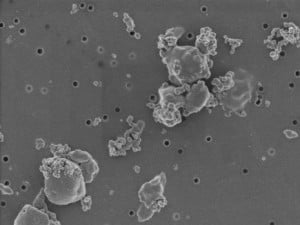 Dust specks are touted for their insignificance. But black carbon particles have global impact. Michigan Technological University researchers collaborated with a team from the Los Alamos National Laboratory and several other universities to shed light on the complex way black carbon and solar radiation interact to increase warming in the atmosphere. The research came out this week in Nature Communications.
Dust specks are touted for their insignificance. But black carbon particles have global impact. Michigan Technological University researchers collaborated with a team from the Los Alamos National Laboratory and several other universities to shed light on the complex way black carbon and solar radiation interact to increase warming in the atmosphere. The research came out this week in Nature Communications.
Michigan Tech’s team focused on the microscopy work, which is also important for other research done in the lab and in the field, from thecloud chamber on campus to atmospheric monitoring on Pico Mountain in the Azores. Understanding the impacts of atmospheric particles will help refine climate change models, weather predictions and provide better information for making policies on black carbon and other short-lived pollutants.
Black Carbon
Black carbon is basically soot. The particles—similar in size to corn starch dust—make their way into the air from cooking fires, automobiles, industrial plants, wildfires and other kinds of burning. And rarely is black carbon just black carbon; the soot is often mixed with other atmospheric particles. Claudio Mazzoleni, an associate professor of physics at Michigan Tech, and his collaborators have to separate out the black carbon from everything else by heating up the particles.